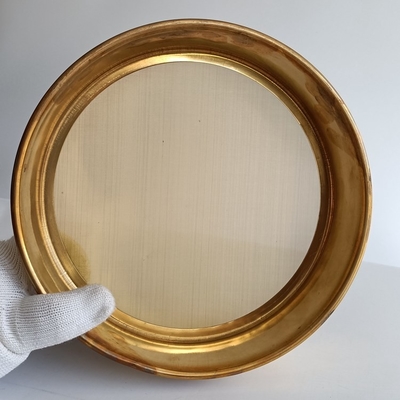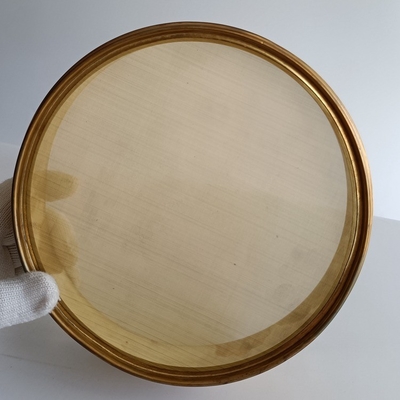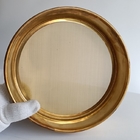100um-10000um Brass Test Sieve mesh

Contact me for free samples and coupons.
Whatsapp:0086 18588475571
Wechat: 0086 18588475571
Skype: sales10@aixton.com
If you have any concern, we provide 24-hour online help.
x| Product Name | Brass Test Sieve | Technique | 300/200 |
|---|---|---|---|
| Frame Material | Brass | Mesh Material | Brass |
| Mesh Type | Woven Mesh | Hole Shape | Square |
| Aperture Size | 100um-10000um | Frame Layer | Double |
| Feature | Precision Filtration | Application | Laboraatory |
| Highlight | 10000um Brass Test Sieve,100um Brass Test Sieve JF-3007,10000um brass sieve mesh |
||
100um-10000um Brass Test Sieve mesh
Overview of brass test sieve
Brass standard sieve (also known as brass test sieve, brass standard inspection sieve, brass particle size analysis sieve, brass particle size check sieve, brass particle size inspection sieve, brass sample sieve) is used to classify the particle size composition of various powder materials. It is widely used for accurate screening and particle size detection of granular materials in abrasives, dikan, metallurgy, pharmacopoeia, chemical building materials and other industries.
Specifications of brass test sieve
1. Diameter: 200-300mm;
2. Height: 50mm;
3. Screen surface material: brass;
4. Screen frame material: brass;
5. Process: frame punching
Use of brass test sieve
1. Weigh the sample according to the regulations;
2. Sieve the samples according to the size of the sieve holes;
3. When the thickness of the sieve layer on each sieve is greater than the maximum particle size value of the sample, the sieve residue on the sieve should be divided into two parts and sieved again until the throughput of each sieve per minute does not exceed 0.1% of the total sample;
4. When the particle size of the sieved particles is greater than 20.0mm, during the sieving process, it is allowed to move the particles with fingers;
5. Weigh the weight of each sieve, accurate to 0.1% of the total weight of the sample;
6. Compared with the total amount of samples measured before sieving, the difference between the sum of all the sieve remainders on the sieve and the remainder at the bottom of the sieve shall not exceed 1%.
Standard screening test results
1. Divide the sieve residue on each sieve by the total amount of samples to calculate the fractional sieve residue percentage of the sieve (accurate to 0.1%);
2. The percentage of residual sieve calculated by each sieve is added to the percentage of residual sieve of each sieve larger than the sieve number, and the cumulative percentage of residual sieve is calculated (accurate to 1%); 3. According to each The cumulative percentage of sieve remaining is used to evaluate the particle gradation of the sample.
![]()
![]()
![]()







